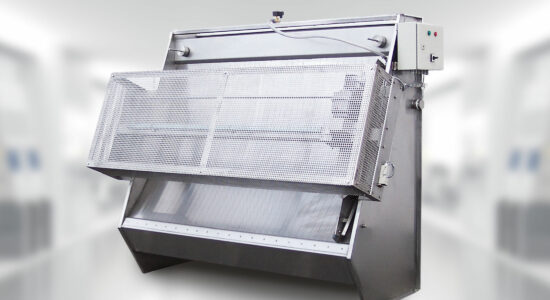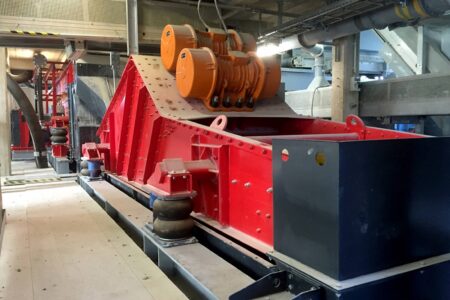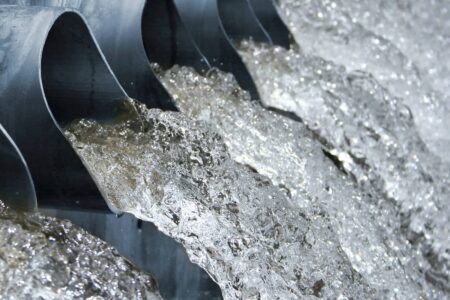Operating behavior & mechanical features
The profile bars of the wedge wire screen are arranged parallel to the curved screen plane. These screen linings are easy to replace and are selected according to the gap width (from 0.05 – 2 mm) depending on the specific problem. Due to the same radius of curvature and the same screen length, the screen linings can be rotated and therefore used for longer.
The device is equipped with an inlet housing for feeding the suspension to be dewatered or classified. A collection box with a nozzle in the bottom of the housing is used to discharge the screenings, while the dewatered solids fall off automatically at the end of the screen surface across the entire width.
Normally, the curved screen is operated without pressure or pressurized in such a way that the inlet is at a free gradient. For unpressurized operation, the inlet housing is fitted with overflow weirs or slotted nozzles. An inherently elastic flap enables automatic volume regulation in the simplest possible way.
In special cases (e.g. if the suspension has a high viscosity), designs with a pressure housing are used, whereby slotted or round nozzles are used to feed the suspension.
Depending on the feeding device, the suspension fed to the curved screen is directed via a weir or through nozzles in a tangential flow onto the upper part of the curved screen surface. As the flow continues over the screen surface, the boundary layer of the flow belt is deflected by the resulting angle of incidence between the profile bars and thus passes through the slot openings.
If the gap width is selected so that solids (fine fraction) can still pass through with the liquid, classification takes place. Quantitative separation or dewatering of the solids, on the other hand, takes place when the smallest solid particle in the suspension is larger than the separation particle size resulting from the choice of screen gap width. The largely dewatered solids or the coarse fraction is automatically discharged at the end of the screen surface due to the constant flow of material.
The constant overflow with relatively high flow velocity in conjunction with the shearing of the boundary layer produces a high self-cleaning effect, so that screen blockages are avoided. Screen wear is very low, as the boundary layer of the flow belt acts as a liquid film to counteract abrasion.
For classifying tasks, the gap width of the screen can be selected to be considerably larger (up to a multiple) than the desired separation particle size, which ensures a high throughput rate, a low level of faulty particle discharge and a screen surface that is always free and open.








